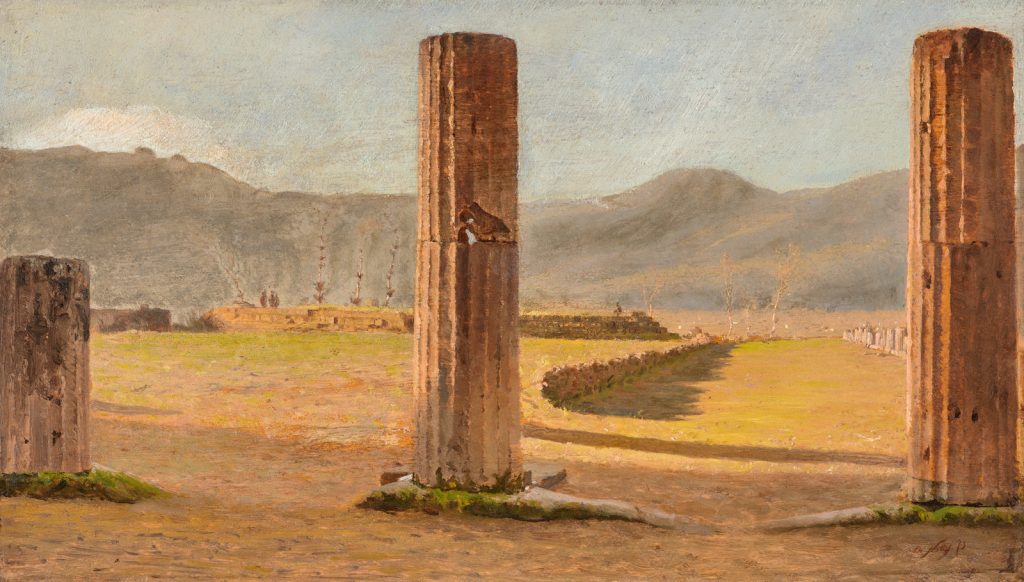Giuseppe De Nittis (Barletta 1846 - 1884 St.-Germain-en-Laye)
Foro Triangolare, Pompei [The Triangular Forum in Pompeii], 1873
Oil on panel, 17.8 x 30.7 cm
Signed and dated lower right De Nittis 73
A label on the verso reading Une vue de Pompeii par Nittis 1873 ...
Provenance:
Private collection, Rome
Rome, Christie’s, auction sale, 4 June 2001, lot 780
Private collection, USA
New York, Sotheby’s, auction sale, 27 January 2010, lot 225 (US$98,000)
Literature:
Goupil & Cie and Boussod, Valadon et Cie records, stock ledger no. 6, Los Angeles, Getty Research Institute, p. 179, no. 1831 or p. 180, no. 1841
We are grateful to Professor Christine Farese Sperken for examining the work. She has confirmed its authenticity.
Please view the publication on "Giuseppe De Nittis - My Italy" as pdf.
The painting titled Foro Triangolare: Pompei [The Triangular Forum in Pompeii] is signed and dated 1873. Neither a study nor a sketch, it is a magnificent finished work which contains numerous distinctive elements of his style. It is datable to the spring of 1873 and was executed in the final weeks of De Nittis’s extended stay in Italy. A topographically exact veduta vibrant with detail, it is identical with a work consigned by De Nittis to Goupil, his dealer in Paris, and listed in the gallery’s stock ledger.[1]
Three massive columns in the foreground give rhythmical balance to the severe symmetry of the composition. De Nittis picks out and effectively orchestrates the damage to the central column through which distant hills are glimpsed. He deliberately dispenses with staffage. The motif is timeless – the columns of the Foro Triangolare – testimony to the enduring presence of antiquity – are embedded in the sun-drenched landscape of the Sarno valley. A veil of delicate grayish-blue shrouds the massif of the Monti Lattari.

Fig. 1 Giuseppe De Nittis, Il Foro di Pompei [The Forum at Pompeii], 1875, oil on canvas, 80.5 x 57.3 cm, Dini and Marini no. 599, private collection
[1] Goupil & Cie and Boussod, Valadon et Cie records, stock ledger no. 6, Los Angeles, Getty Research Institute, p.179, no. 1831 or p.180, no. 1841. [2] Dini and Marini 1990, op. cit., no. 599. [3] Ibid, nos. 594-6.

